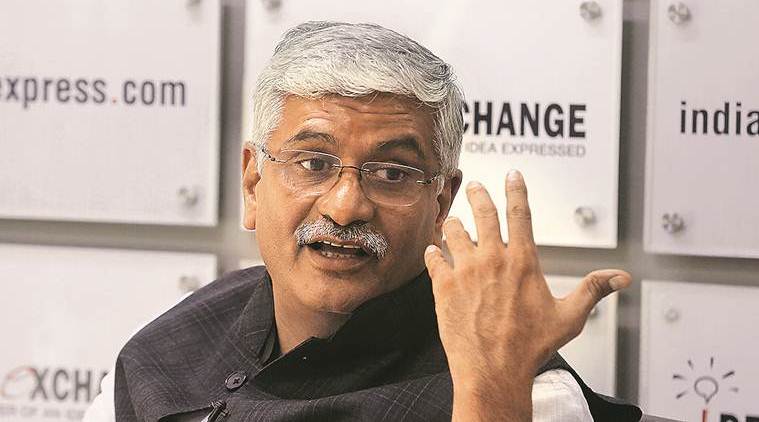 Jal Shakti Minister Gajendra Singh Shekhawat. (File Photo)
Jal Shakti Minister Gajendra Singh Shekhawat. (File Photo)
Jal Shakti Minister Gajendra Singh Shekhawat speaks to Liz Mathew on the water availability in the country amid the lockdown and how the COVID-19 outbreak will hit water-related projects.
How do you see the water situation in the country now?
Although water is a state subject and the states are managing it primarily, out of the 5500 plus reservoirs, 138 are being monitored by the Centre. Those have the capacity of 66 per cent of the total capacity… Fortunately, this year, as on April 30, we have the capacity of 56 per cent more water and if I compare last 10 years’ average, water availability is 46 per cent more… This gives us an idea that in the reservoirs across the country, we would have a good amount of water to cater to our domestic and drinking needs and agricultural demands. Secondly, in the Himalayan system, snow on the peaks is unprecedentedly high. Never in the last 50 years, peaks had this amount of snow at this time. So the water from the melting of the snow will also come in high quantities, especially in Bhakra, Nangal etc as well as in Ganga and Yamuna…we are in a better position this year and hopefully we won’t face a situation like what we faced in Chennai this year.
The National Infrastructure Pipeline task force’s report put fresh water as one of the vital challenges for the 2025 infrastructure vision. How do you see the situation now?
Now water has become more significant. In any case, it is the lifeline of all development and the centre of policy planning in agrarian countries like ours. In the post- COVID19 era, the situation in the world is going to change… India will have more opportunities. Our water resources and its sustainability is very critical. We have that in mind.
You are heading the Jal Jeevan Mission to provide functional tap water connection to every household in the country by 2024 which is closely linked to the housing for all programme. Do you see such missions getting affected by the coronavirus situation?
There is no idea of reviewing targets now. The targets we have fixed for this financial year, we will see that we are on our targets. No doubt the COVID-19 situation has had an impact on everything. To deal with the situation, during this lockdown, we have requested all the states… I have spoken to all the state ministers and we have had video conferences with the water resources ministers, drinking water ministers, officials, engineers etc to complete DPR and project planning with the available data so that we can begin work immediately after the lockdown. The government has already relaxed the restrictions on constructions on water-related activities. We have spoken to the states to initiate work… and work on low-hanging fruits to see that water is stored and reserved.
Are you concerned about the expenditure cuts in the wake of the current crisis?
Certainly. I am not so concerned about the government of India even though the crisis will affect its resources and expenditure. I am more concerned about the states. The states are going to face a difficult situation. In Jal Jeevan mission, barring the Himalayan states and the Northeastern states or the UTs, all states… are working on projects on a 50:50 quotient. For states to spare such budgetary allocation in the next three years in this condition looks very difficult to me… I think the states should fix their priorities and water should be at the top.
The government has initiated attempts under Atal Bhujal Yojana to strengthen the institutional framework for participatory groundwater management and bring about behavioural changes at the community level. How far has it succeeded?
It is at nascent stages…. this COVID-19 outbreak has affected it…. I have told the states to prepare the programmes and have asked officers to converge the resources and funds available to states under different heads for better results.
One positive impact highlighted by most environmentalists is how the COVID-19 crisis helped the earth clean itself. How far would it help your mission on clean water?
Undoubtedly it has helped. Pollution levels have dipped as industrial effluents have come down… I have already asked my departments to study the change in the quality of the water in Ganga and Yamuna from the first day of lockdown. We are compiling all the studies and analysing… it’s not just because of the lockdown. It’s also because of the Namami Gange Project. Also, the rainfall during the lockdown has increased the water flow in Yamuna. With less farming activities, water quantity has increased from an average 300 cusecs this time to 3000 cusec. This is how nature heals itself. It’s a point of introspection for all of us.
There has been much discussion on the Bhilwara model in Rajasthan’s fight against COVID-19? What’s your view on it?
In Bhilwara, it was all initiated by a doctor’s family.When they started having symptoms, they reported it to district administration and they worked well. If somebody has been applauded, it’s the public. They behaved responsibly and followed all instructions… But the state government became complacent. They could not address similar situations in Jaipur and Jodhpur. Why have they failed in these places?